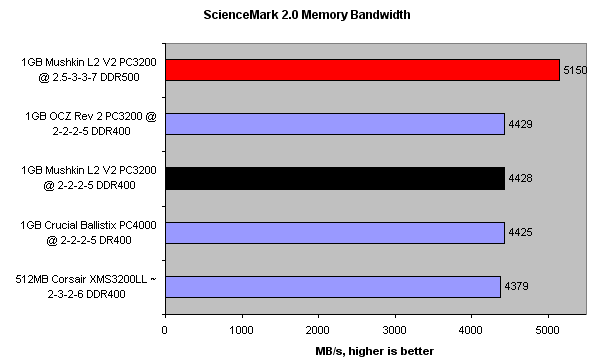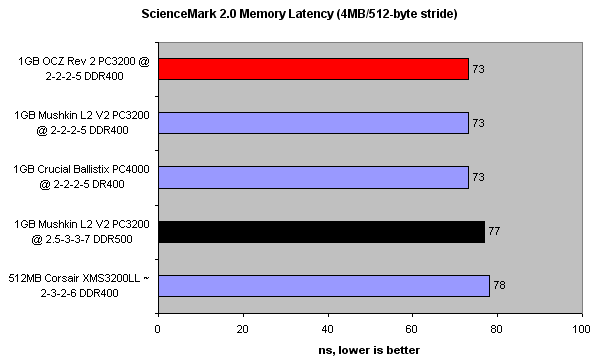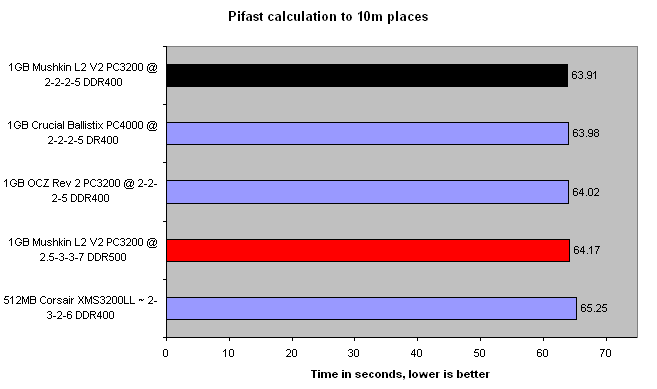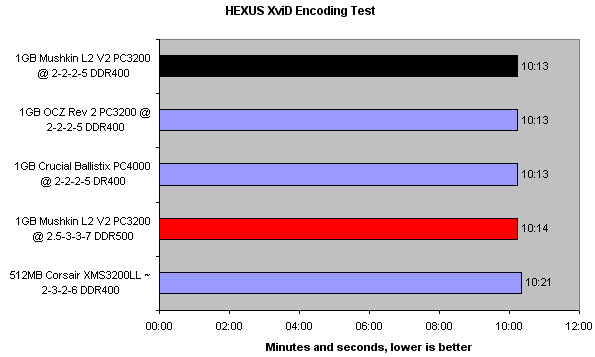2D tests
The usual look at bandwidth and memory latency first.
A higher MHz speed and associated front-side bus setting translates to higher bandwidth. That much is clearly obvious.

There's literally nothing to choose between 3 low-latency DRAM sets that are all being run at 2-2-2-5. What's being shown here it nanosecond latency, so running at DDR500 speeds, albeit with 2.5-3-3-7 timings, doesn't look so bad because latency is being somewhat masked by increased MHz.

It comes as a surprise to see low-latency DDR400 memory take top spot here. One would expect that an extra 25% RAM and FSB speed would be enough to compensate for looser timings. That's not the case, however.

Pretty close at the top. Once again, low-latency ekes out an advantage. You can now see just why so many enthusiasts hanker for 2-2-2-5 RAM.









